In 1974, Chinese farmers in the area of Xi’an were digging a well when one of them unearthed a clay body. Villagers at first believed it to be the Pottery God—but turns out the statue was only one of an estimated 8,000 terra-cotta soldiers, buried in battle formation and charged with the task of guarding the tomb of Emperor Qin, the first emperor of China. These soldiers are over 2,000 years old, since Qin died in 210 B.C.
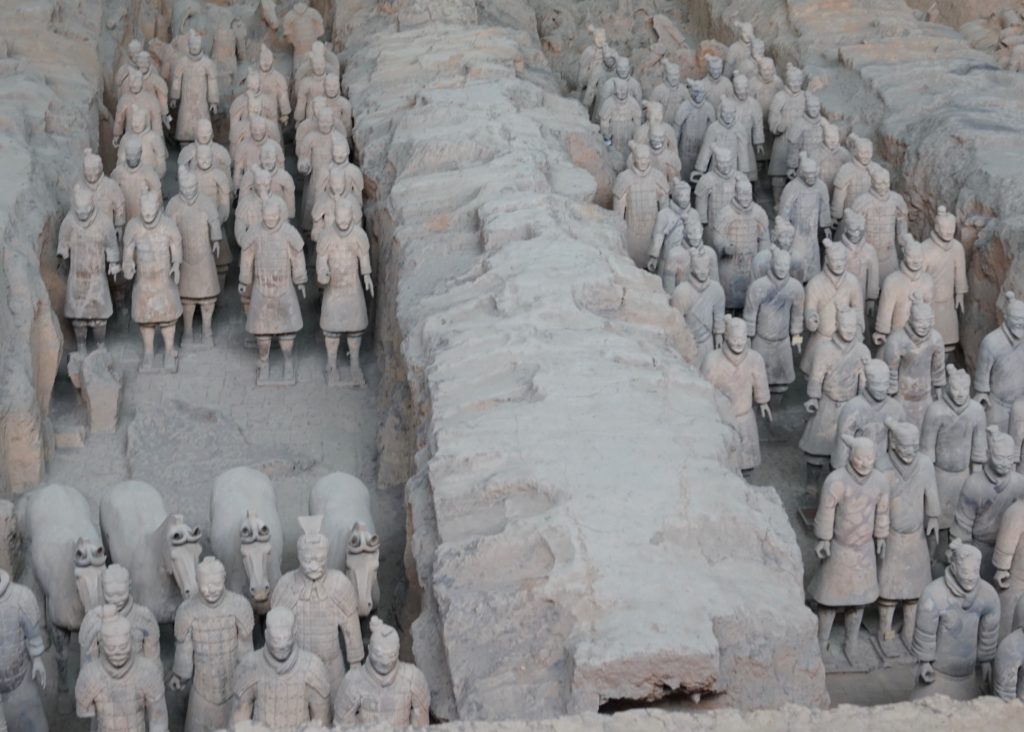
We visited the Terra-cotta Army Museum with Sunni, a sweet and knowledgable guide whose Mandarin-accented English I found difficult to understand. Here she is pictured with Chad and me on Xi’an’s ancient city wall, another historical highlight.
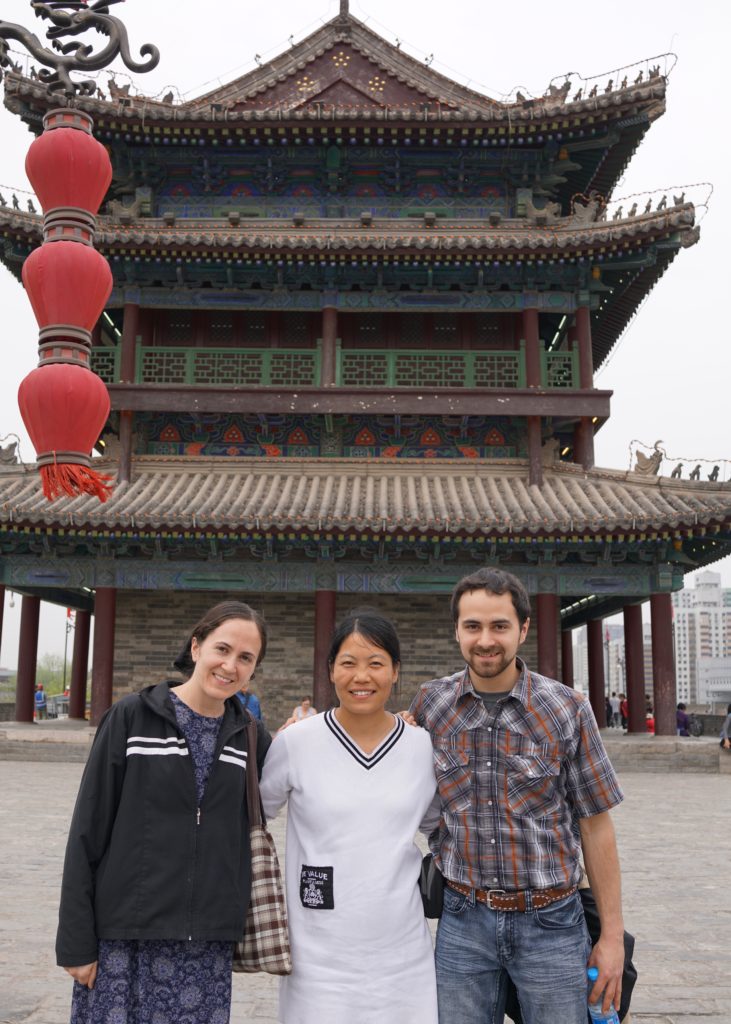
Sunni told us that each of the thousands of warriors were modeled after real soldiers, though the artists and criminals who crafted them made them somewhat larger than life-size, in keeping with the emperor’s wish for an imposing and invulnerable army to protect him in his afterlife. Each soldier was given detailed dress—even down to shoe strings—and at one time carried a bronze weapon. However, the army was pillaged, their weapons stolen, and their trenches partially burned within a few years of the emperor’s death. So much for their protective abilities.
Emperor Qin’s tomb still remains intact, however, protected by the Chinese people’s respect for an esteemed ancestor and by the government’s wish to delay excavations until sufficient technology exists to preserve what is excavated.
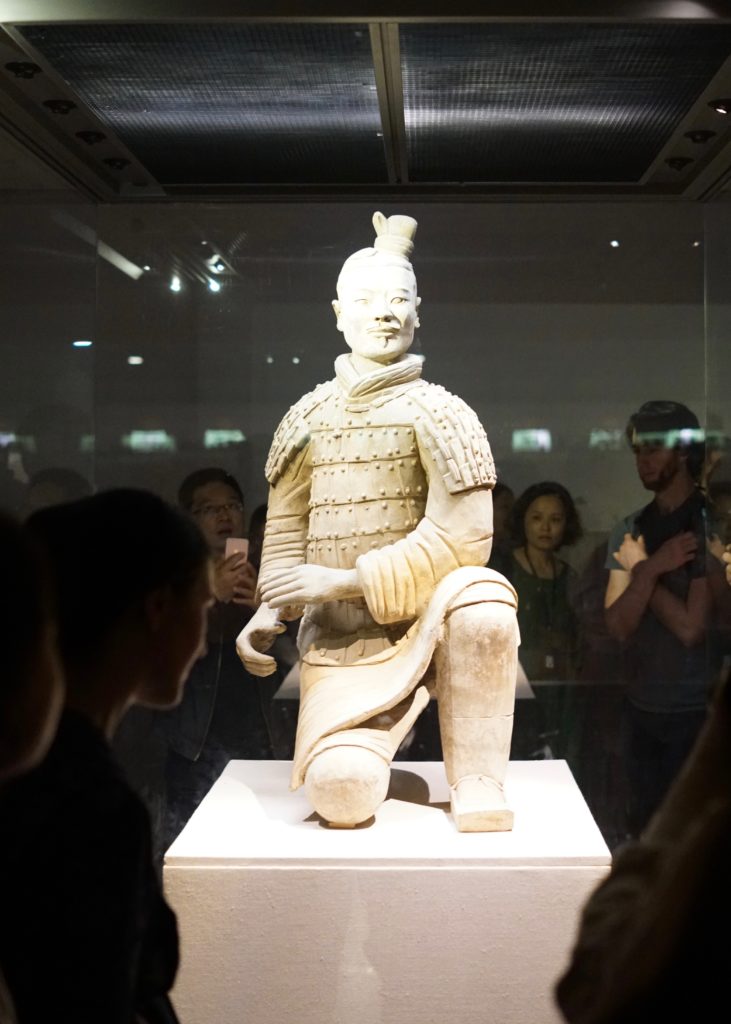
Emperor Qin ruled during a bloody age, and Sunni told us it is believed that many of the thousands of artists and criminals who created this army were buried alive with the emperor at his death, to preserve the secret of their design.
The soldiers were originally painted in natural-looking colors which faded immediately after being exposed to sunlight. Because of this, the government wishes to delay excavation of the majority of the soldiers until science has discovered a way to preserve the paint. Only about 2,000 of the 8,000 soldiers have been excavated so far. Many soldiers are in fragments and piecing them together is a time-consuming task.
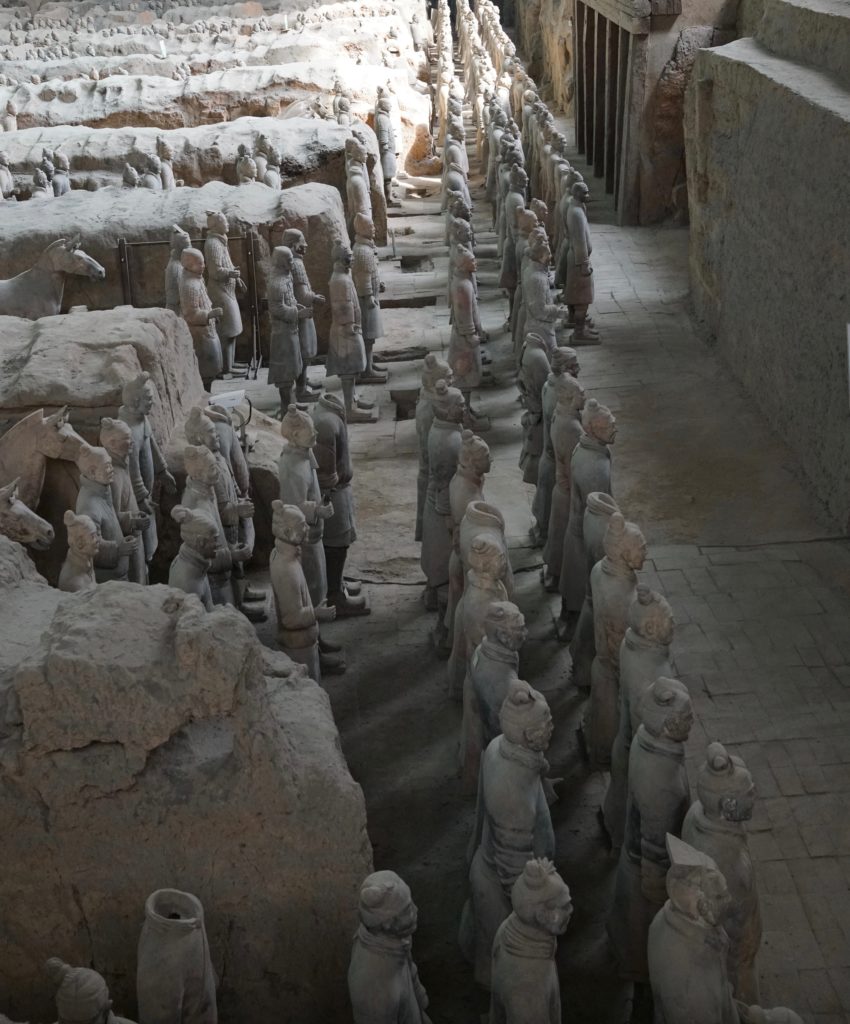
While the idea of the terra-cotta army fascinates me, I was disappointed that the size of the crowds in the narrow spaces around the pits made it difficult to get a good look. A front-row position was possible only with patience and a little shoving.
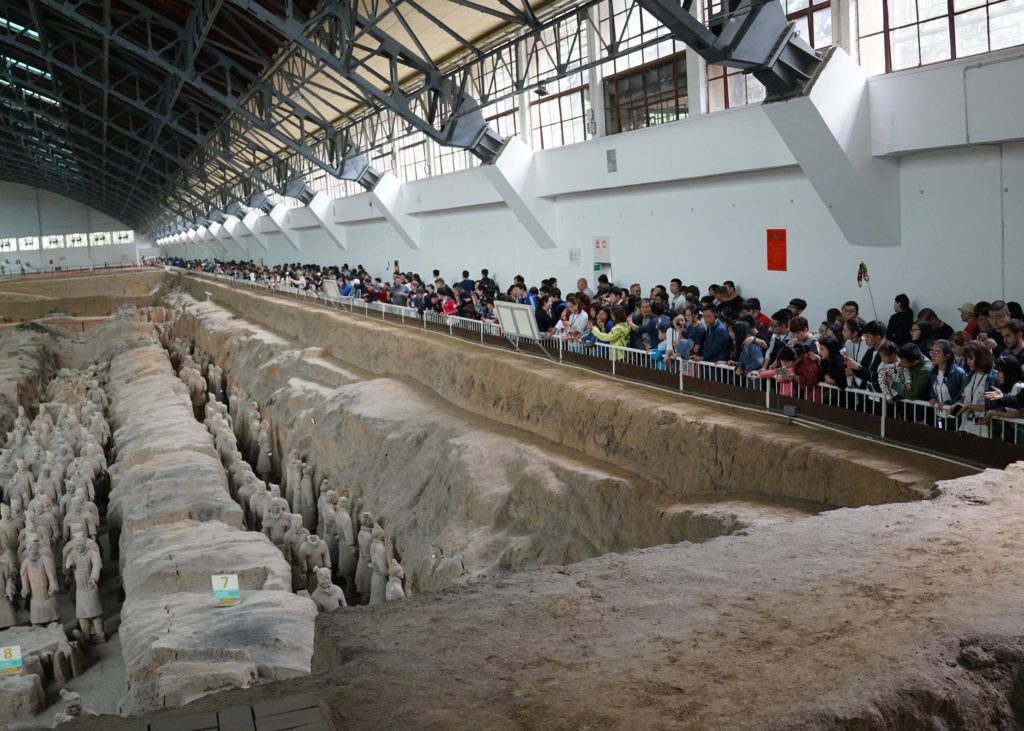
After our day of touring the Terra-Cotta Army Museum and another museum called the Banpo, our guide dropped us off at the Xian ancient city wall, initially built during the 1st century Tang Dynasty, enlarged during the 14th century Ming dynasty, and restored beautifully in modern times as the most complete ancient city wall of China. Nowadays, it serves as a dividing line between the Xi’an city center and the rest of the city. We rented bikes to bike around the top of it, a distance of 8 1/2 miles.
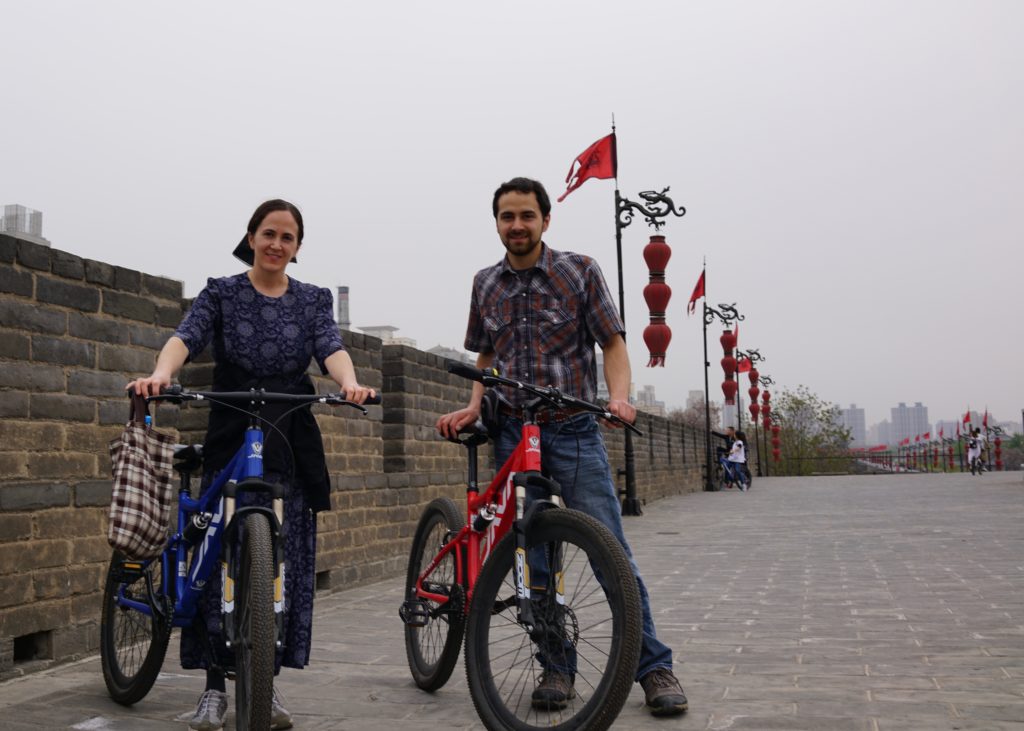
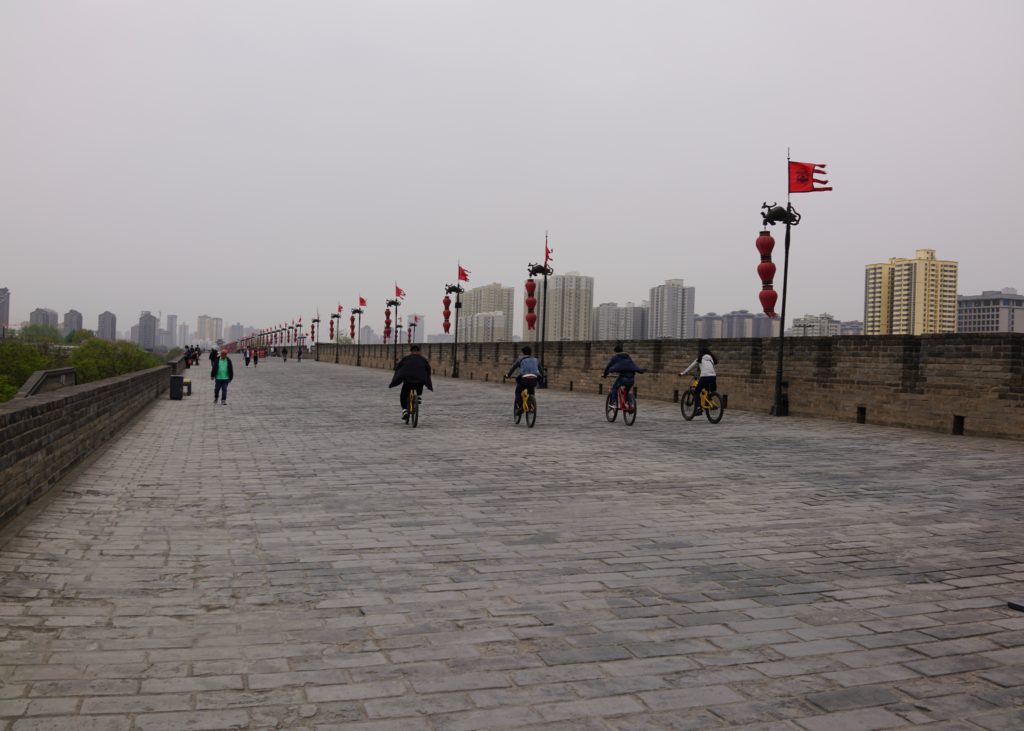
Some people rented tandem bicycles and rode two by two, although I’m not sure where this man’s partner is.
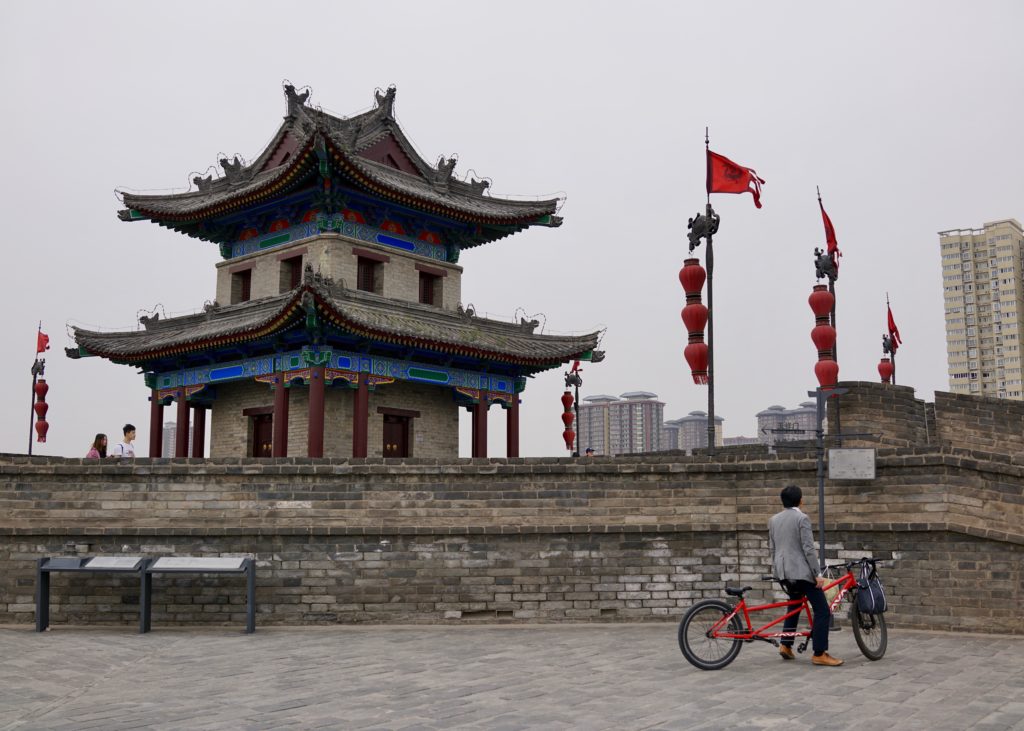
The wall provided a great view of the city below.
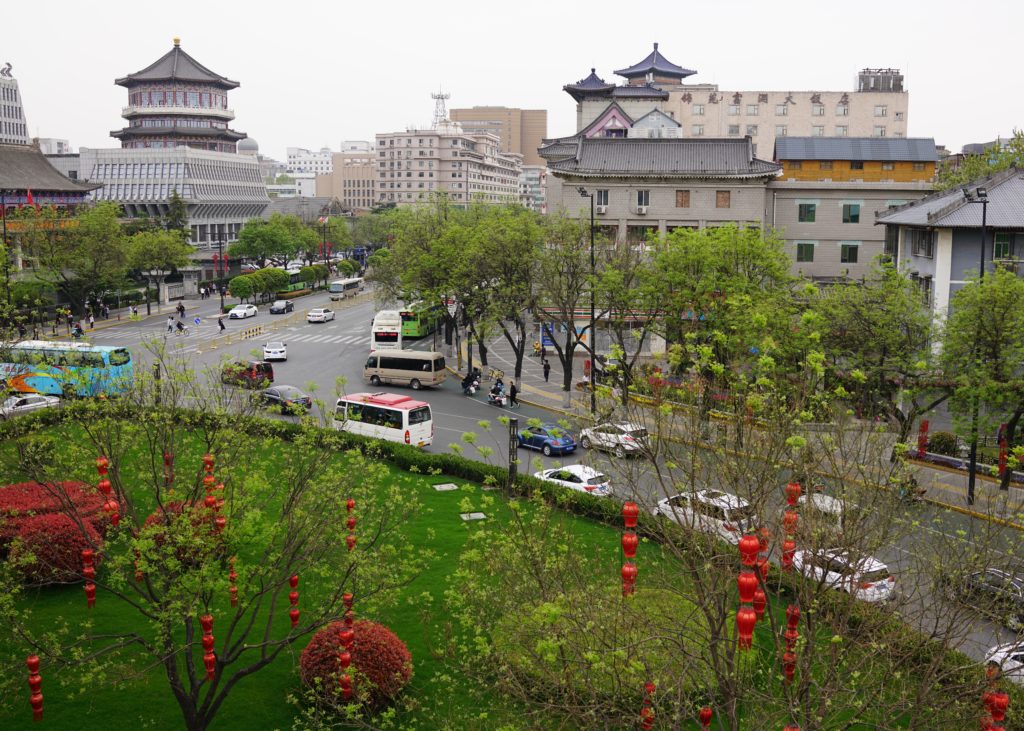
For supper, we walked to Muslim Street, just a few blocks from our hotel.
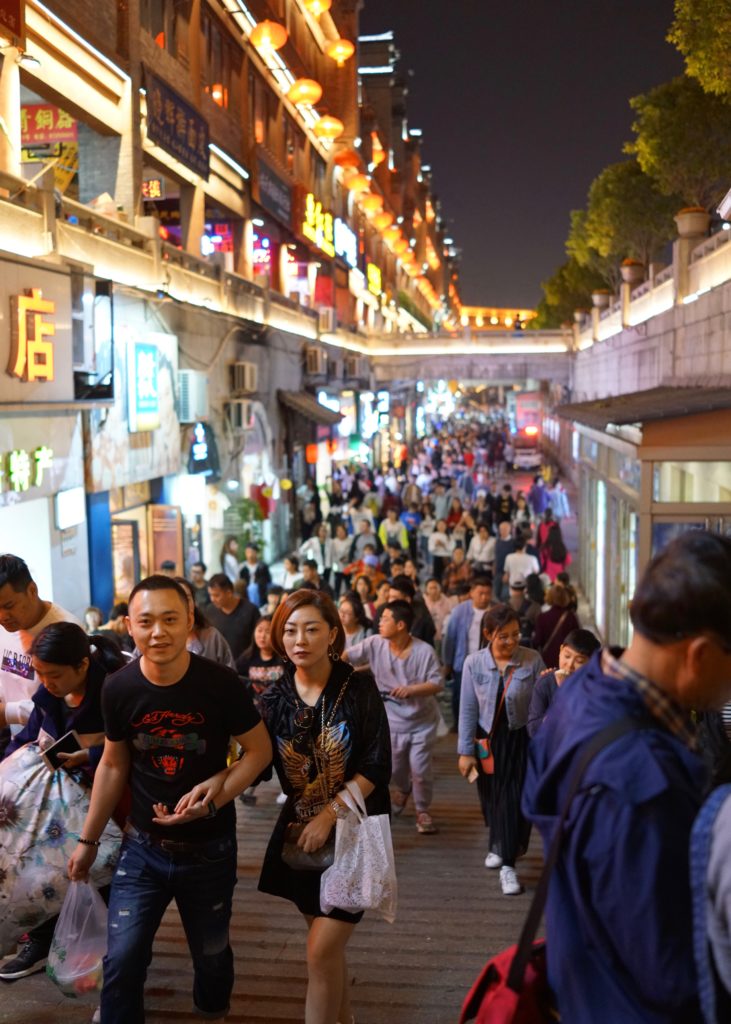
China gives a whole new meaning to the term “countless masses.”

Muslim Street is popular largely because of its many delicious eating places. And, as the name implies, many of them are run by Muslims.
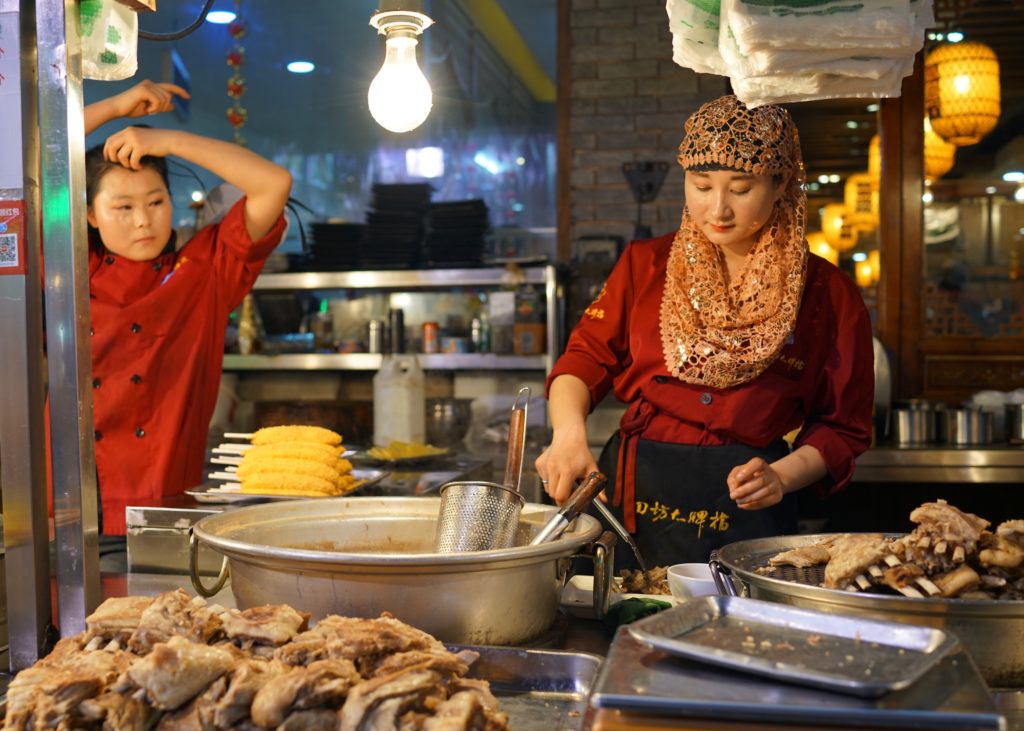
The Muslim women wear their Islamic dress with a distinctively Chinese flavor I found intriguing.

These young Muslim women look almost like young Mennonite women with a unique Chinese twist to their dresses and veils. :)
We stopped to eat a dish that had been recommended to us: “yóng ròu pào mó” or “bread soaked in lamb soup.”

It was delicious.

We stopped at a booth where a young man was selling personalized wire keychains. I wrote down the names of each of my sisters and, using a needle-nosed pliers, he twisted the names from wire in the color of my choice and attached it to the shape of my choice. A souvenir gift perfectly lovely and perfectly small. Since Chad and I had packed all our luggage in a backpack apiece, we didn’t have a lot of extra room for big stuff.

We saw some people enjoying a foot spa where fish clean your feet by nibbling off dead skin cells. I wanted to try this! but never got around to it.

Near the entrance to Muslim Street and smack in the center of the city is Bell Tower. Lit up at night, it is a picturesque sight. With so many young people relaxing on this stairway which leads to a shopping plaza—talking, leaning against each other, taking selfies—I felt as if I was on a college campus.

For breakfast the next morning, we went back to Muslim Street, where we finally got to witness the creation of some of Xi’an’s famous hand-pulled noodles. This young man took his dough from this…
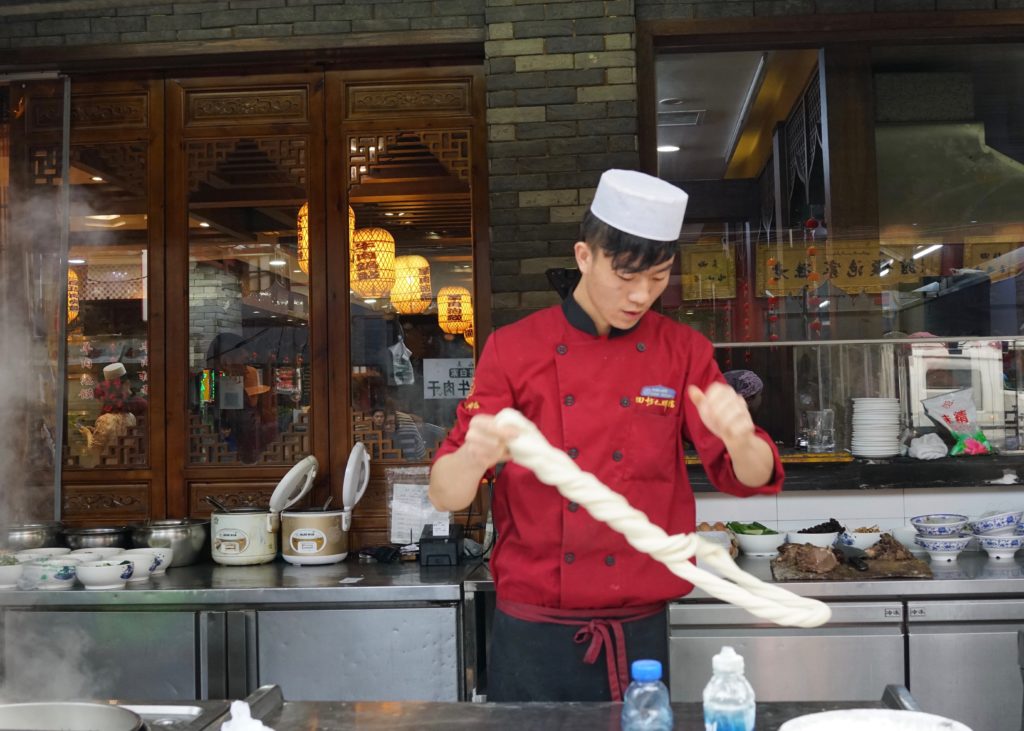
…to these thin and perfectly uniform noodles in a matter of minutes.
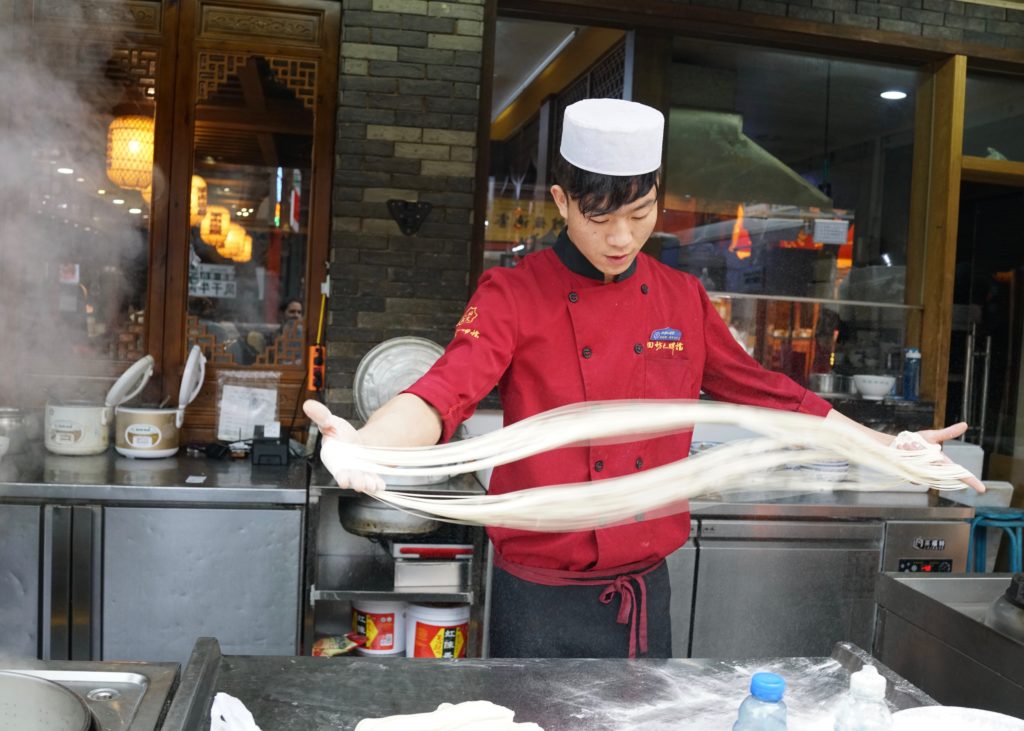
After this amazing display, we went inside the restaurant and ordered biangbiang noodles, a wide, hand-made noodle whose traditional Mandarin character is so complicated it requires 62 strokes to write. If you’re interested in the legend of how biangbiang got its name, you can read about it at ChinaSimplified.com.
Ordering food with only the aid of a pointer finger and a translator app can be tricky. And even more frustratingly, we sometimes met kind and helpful people who BADLY wanted to talk to us and couldn’t get through. This sweet old lady is one example. I shared a bench on the sidewalk with her while I waited for Chad to run back to our hotel for something he’d forgotten. She tried very hard to introduce herself and tell me just who she was and what she was doing in this city, but I couldn’t understand a word she said. We took a picture for memory’s sake, anyway.
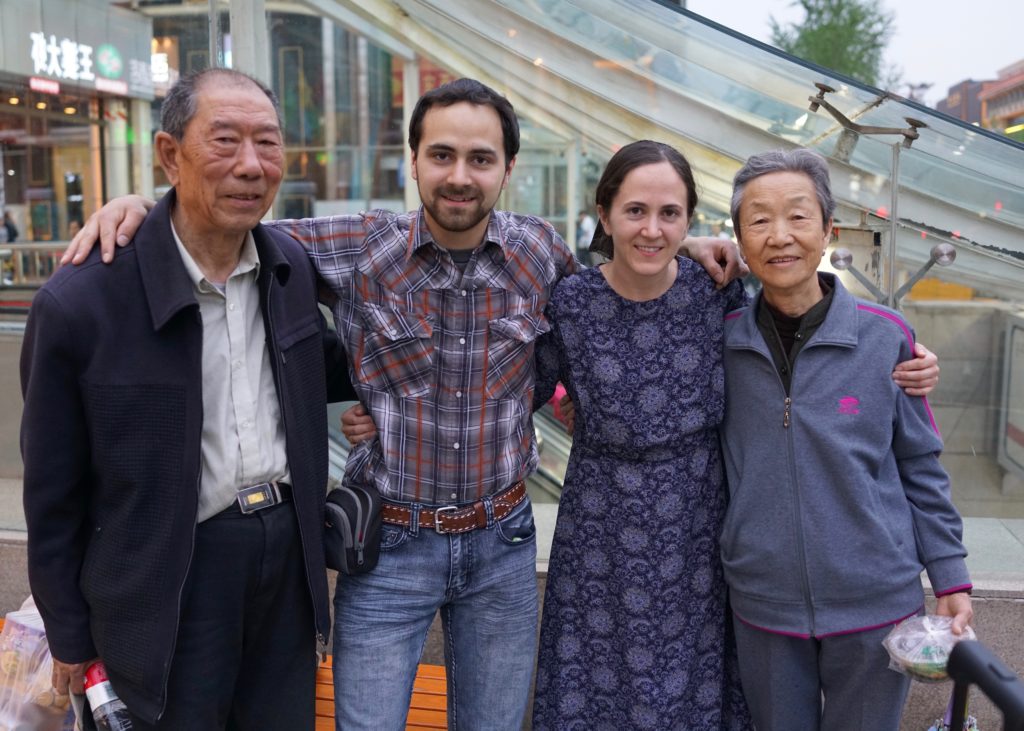
We bypassed the famous Giant Wild Goose Pagoda, which came with a hefty fee, to visit the Little Wild Goose Pagoda, which had been damaged in an earthquake and was absolutely free. We were not allowed to climb it, but we wandered through the lovely grounds which surround it and the free museum nearby.
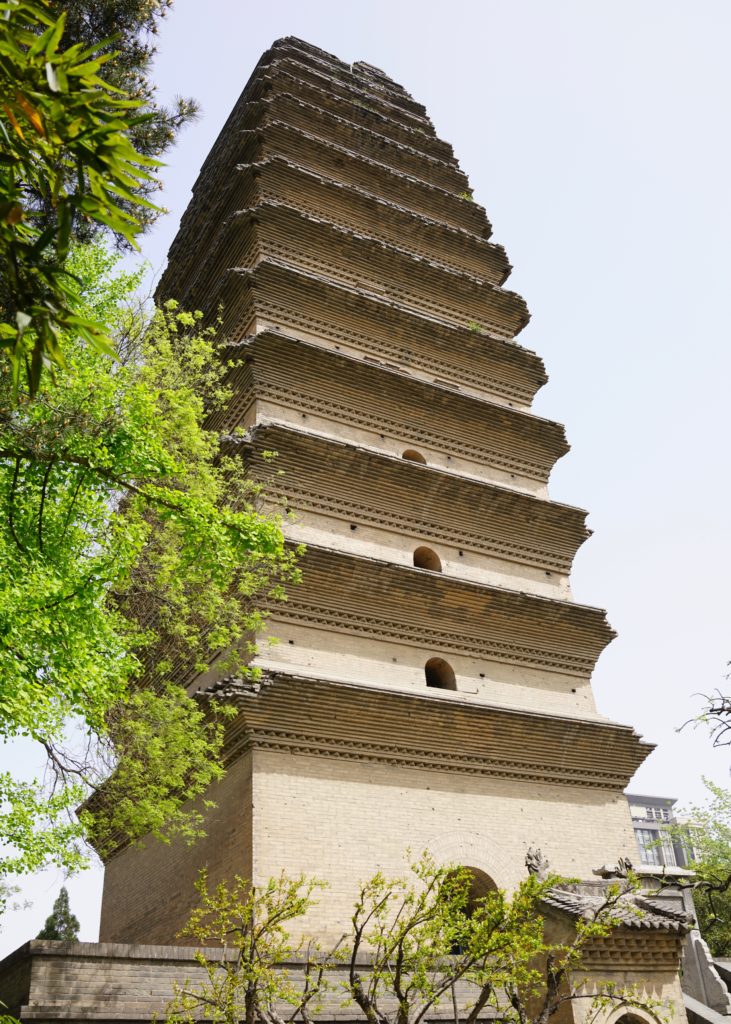
While Chad took photos, I took a fun and simple calligraphy class with a group of German tourists. Our Chinese teacher taught us in English to write the Mandarin character “happiness” and the German tour guide translated her instructions to German. How awesome is that?! :) My cell phone photos are too poor in quality to share on this blog, so my first attempts at calligraphy will be left to your imagination. However, I promise you I have the document here in my bedroom, and it is stamped with an official red seal proving that my art is authentic.
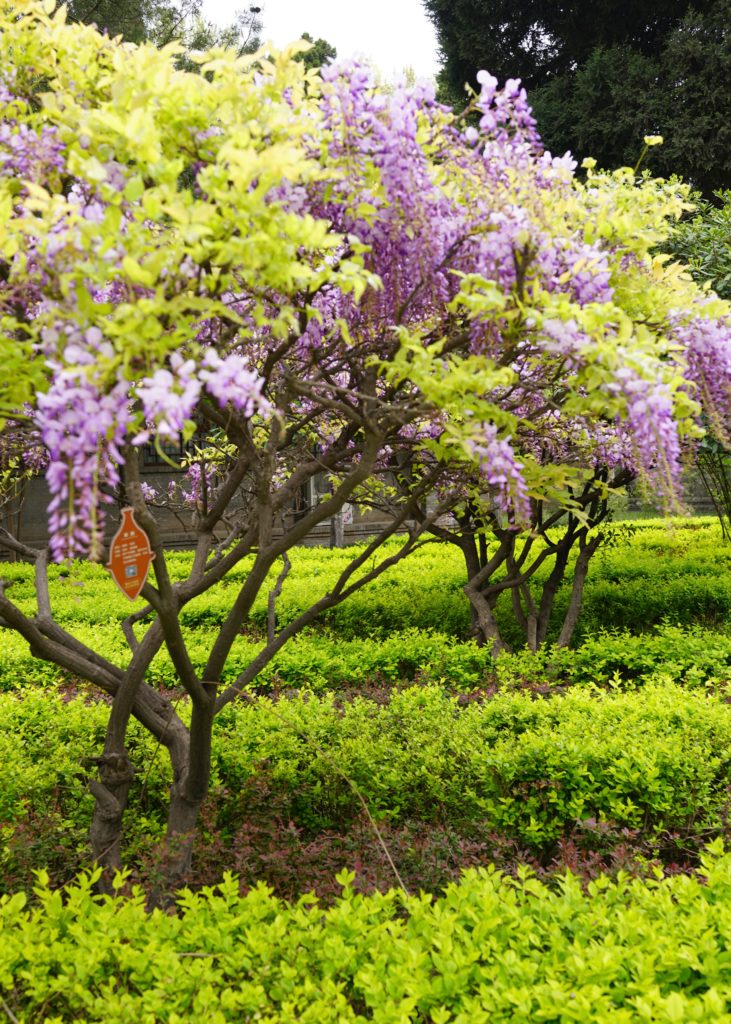
In the evening, after a grueling and grumpy walk across the city because we didn’t want to pay what we thought was an exorbitant taxi rate (It wasn’t, and I’ve proved that by walking it), we boarded a sleeper train which was to take us fifteen hours across the country to Shanghai. But that is a story for another blog.
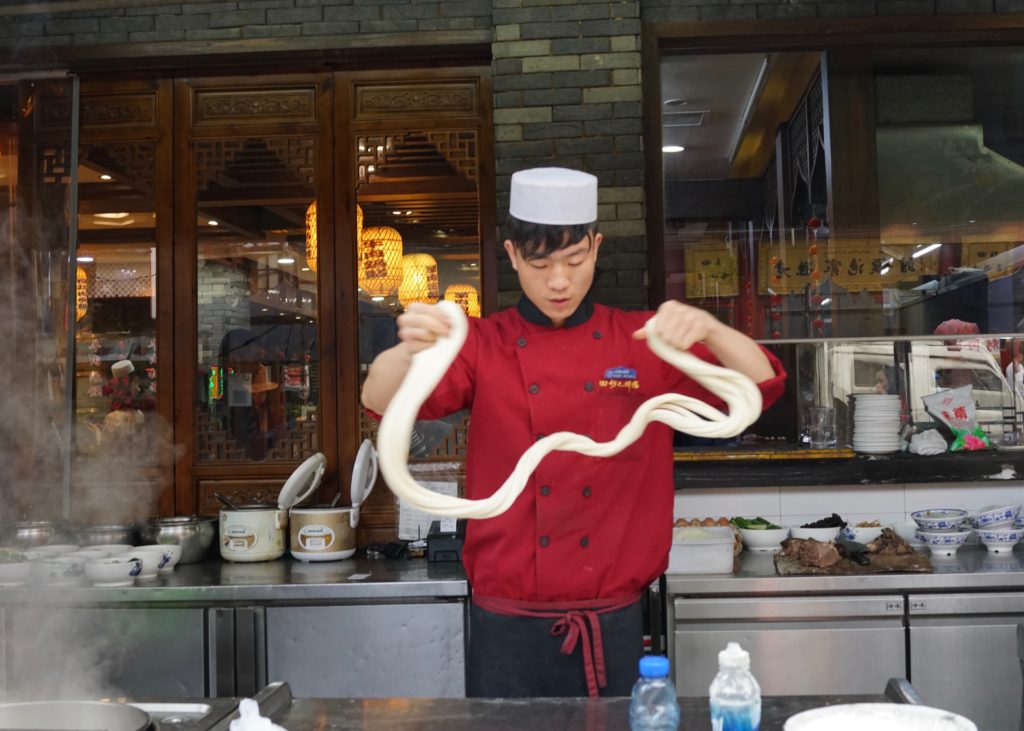
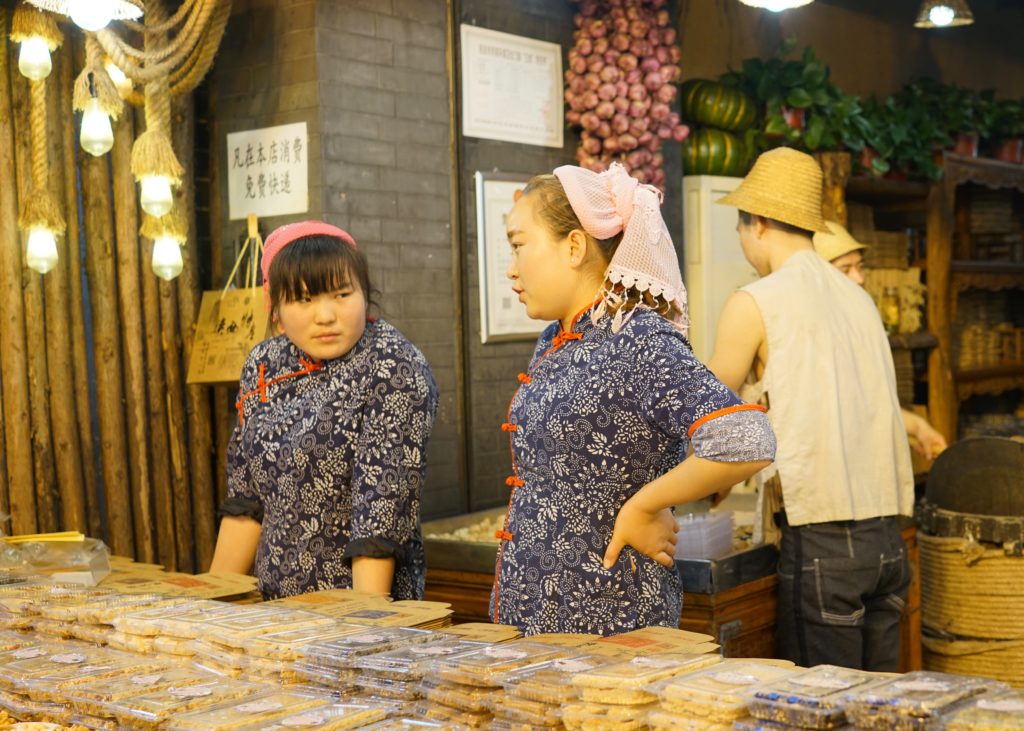 By
By
I find your experience with travel to China so fascinating! I am really enjoying the history and the photos you are sharing. Thank you so much. Excited to hear more.
Thoroughly enjoyed this! Keep on sharing!
I echo the other comments !! your writing and the photos are magnificent. It’s giving me a whole new view of China. Thank you
Thank you for sharing about your trip and all the activities and places you visited! The photography is awesome and it is delightful to see into the daily lives and history of the people and their culture. Enjoyed all the photographs so much! Thank you!